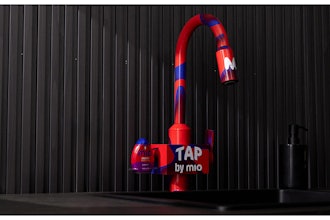The Internet of Things (IoT) is one of the technology sector’s most buzzed about innovations of the past decade—along with the blockchain, augmented reality, and, of course, Big Data. While the Jetson-like fever dream that made many consumers believe that by 2018 we’d all be talking to our lightbulbs and arriving home to already-cooked eight-course meals didn’t actually materialize, IoT is currently having a tremendous impact on industry. While the already cooked meals hasn’t quite materialize, we can talk to a home control device that controls our lightbulbs and much more.
In particular, IoT has become vital to driving innovation in manufacturing and product development.
The insights we can glean from real-time customer usage data would be the stuff of science fiction two decades ago. IoT is embodied today by connected manufacturing or supply chains that can inform how products are built, improved, and maintained. Because of IoT, companies can now understand how, when, and under what specific conditions products are being used. Before the deployment of IoT as part of product development, the reality of operations included in-person inspections, trial and error research and development cycles and marketing focus groups to understand usage and need.
A key future growth driver for many businesses is launching more products and adding new features, faster. While new features can add value, keeping unused or old features or functions add cost that has to be supported. IoT data can be used to identify new and necessary features products, and, more importantly, assess a product’s need to be deprecated. It is the deprecation aspect that simply could not be done before IoT because there has never before been the kind of data clarity coming from the devices themselves about specific features that may be needed or may not be useful.
For too long, product engineers and managers have been keeping features well past their usefulness or simply overvaluing their functions. This sometimes costly failure was mainly due to pre-IoT product assessments conducted through focus groups or customer surveys that would often slant some product features as being far more relevant than they actually were. It was later found that those insights didn’t represent the entire customer base experience with products or features—far too many times
This information can now be immediately analyzed by manufacturers across multiple pieces of equipment to identify which features are being used, what components are at the heart of quality issues, as well as environment interaction and customer usage.
For how this is put into practice, let’s use, as an example, a portable air compressor that needs to be able to operate in various levels of moisture and grime throughout a manufacturing plant. If that air compressor is equipped with IoT sensors, data can be analyzed to gauge how they function in the various environmental operating conditions. With the data, future compressors can be built to withstand similar amounts of rigor or failing products can be phased out. In the end, the data will allow for costs to be reduced and for better functioning products to be produced.
The operational processes that leverage IoT data won’t replace many traditional R&D or product engineering functions; they will add to their effectiveness, however, by providing research and engineering with key information, more quickly. Implementing the right IoT strategy is necessary to reap the benefits of connected manufacturing, supply chains, product development, and more.
Launching new products quickly into new and existing channels is a key focus for manufacturers to increase revenues and IoT is a clear method to create new products faster. There is ab it of art to creating a new product, one that requires a true understanding of what the market wants. Formerly, this was a dark art both figuratively and literally. Product-market fit gurus were viewed as sorcerer-like in their ability to gauge a market, but in reality, they often used gut instinct and guesswork to make blind projections. Attaching IoT sensors to products allows you to read market acceptance and applicability much more precisely when launching new products.
A great example of this that can be observed at your nearest Chipotle, Five Guys or Wendy’s is how Coca-Cola has leveraged its Freestyle connected soda dispensers. The Coca-Cola Freestyle machines allow customers to concoct their own soda flavor recipes, but the advantage to businesses is in its ability to detect product supply levels, sales numbers, and the functioning status of the machine. It even allows marketing teams to implement deals and targeted recipes based on usage data tracked by the machines. Data that showed the popularity of one specific flavor combination actually led the company to widely release a new Sprite flavor in 2017.
Product data obtained through IoT hardware and software deployment can also make clear which features are not required because they simply aren’t used or viable for how the product functions. Combining product usage data with engineering knowledge drives innovation, allowing engineers to better predict market needs and innovate with far more tangible information.
The downside to an ineffective IoT strategy should be apparent in the current era. Not using all the data available while developing products that require multiple modifications or changes to satisfy the marketplace is both time consuming and can ultimately be quite costly. If you aren’t leveraging all the IoT information available, a competitor likely is. It should be obvious that the risk you run is that the competitor will obtain market share while your product is still in development.
Although the Internet of Things has achieved full consumer acceptance—yet—believing it is just a buzzed about technology could be detrimental to anyone who needs to be at the innovative cutting-edge of product development.
Sean Riley is Global Industry Director of Manufacturing and Transportation at Software AG.























